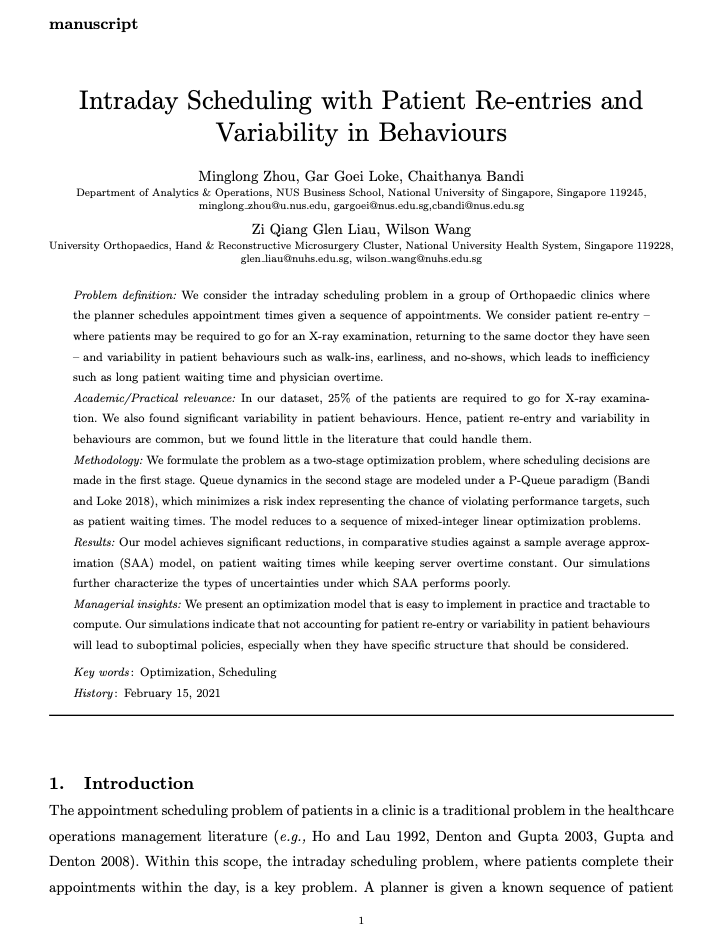Problem definition: We consider the intraday scheduling problem in a group of Orthopaedic clinics where the planner schedules appointment times given a sequence of appointments. We consider patient re-entry – where patients may be required to go for an X-ray examination, returning to the same doctor they have seen – and variability in patient behaviours such as walk-ins, earliness, and no-shows, which leads to inefficiency such as long patient waiting time and physician overtime.
Academic/Practical relevance: In our dataset, 25% of the patients are required to go for X-ray examina- tion. We also found significant variability in patient behaviours. Hence, patient re-entry and variability in behaviours are common, but we found little in the literature that could handle them.
Methodology: We formulate the problem as a two-stage optimization problem, where scheduling decisions are made in the first stage. Queue dynamics in the second stage are modeled under a P-Queue paradigm (Bandi and Loke 2018), which minimizes a risk index representing the chance of violating performance targets, such as patient waiting times. The model reduces to a sequence of mixed-integer linear optimization problems. Results: Our model achieves significant reductions, in comparative studies against a sample average approx- imation (SAA) model, on patient waiting times while keeping server overtime constant. Our simulations further characterize the types of uncertainties under which SAA performs poorly.
Managerial insights: We present an optimization model that is easy to implement in practice and tractable to compute. Our simulations indicate that not accounting for patient re-entry or variability in patient behaviours will lead to suboptimal policies, especially when they have specific structure that should be considered.

